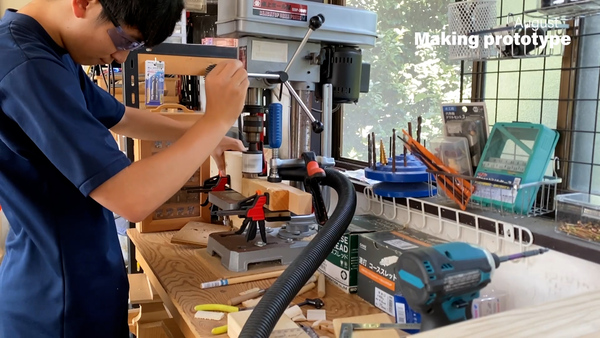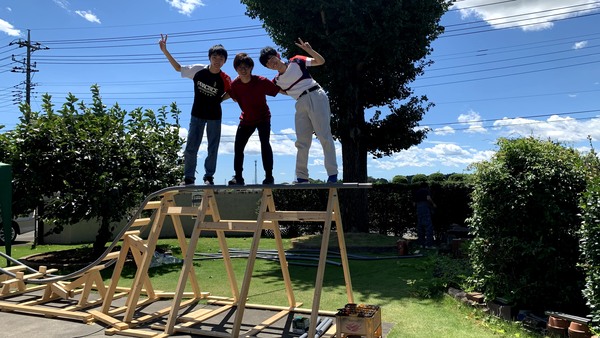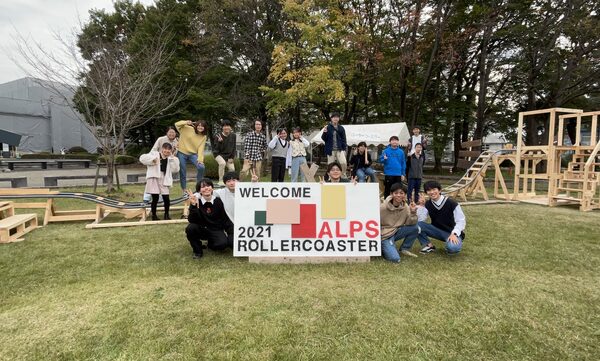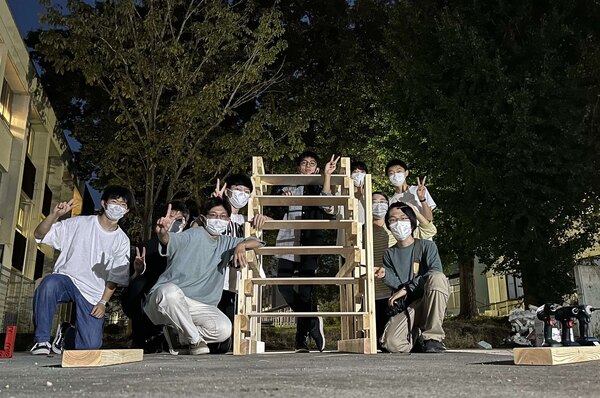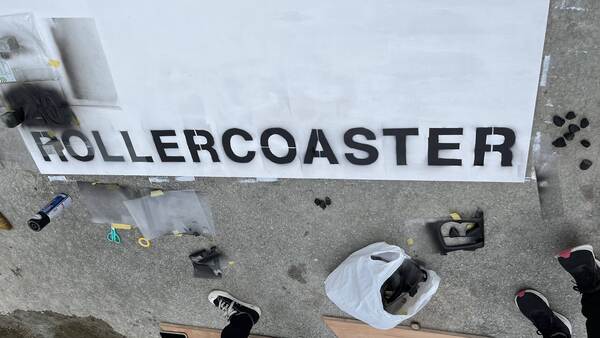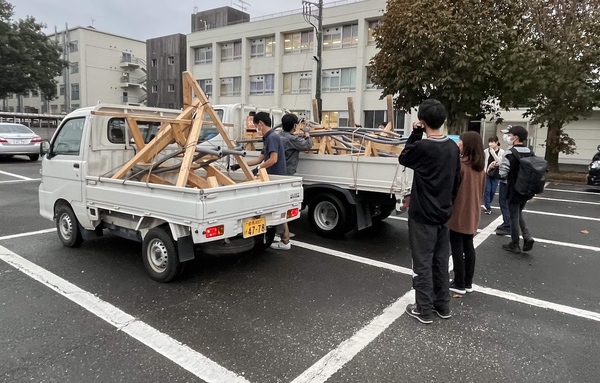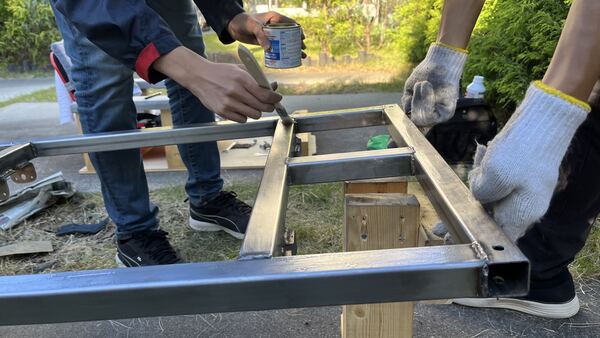Here we present records of our past activities, production documents and drawings!
Introduction
past activities
In 2020, the Roller Coaster activity started at the Koryo Festival held at Oyama Kosen. The next year, however, the Koryo Festival did not give permission for the public to ride the roller coaster, so the public was not allowed.
In 2022, the coaster "Eagle," which was built for the third Koryo Festival, was finally manned and operated for the general public. The results were amazing, and more than 180 people were able to ride the coaster during the two-day operation. The Koryo Festival ended with a great success, receiving much praise not only from the visitors but also from the faculty members of the school.
The scale of the coaster has expanded every year, and while the total budget for 2020 was approximately $660, the budget for 2022 was over $4,600. At the Koryo Festival 2022, the Shimotsuke Shinbun, a local newspaper in Tochigi Prefecture, interviewed us and published our work in the newspaper.
Furthermore, a professor of Oyama Kosen and others suggested that the "Eagle" produced in 2022 could be preserved and that activities after the Koryo Festival could be carried out. As a result, we were able to obtain the cooperation of a kind-hearted person who lent us his private property, which made it possible to preserve the work and smoothly carry out activities after the festival.
In addition, a company run by an alumnus of Oyama Kosen offered to sponsor the event, and we decided to participate in the "Oyama-ichi" event in Oyama City.
2021's Work - Alps
The following year, 2021, we took over last year's activities as a volunteer project. Most of the members had participated in the previous year's project, but students who saw last year's coaster and became interested gradually gathered, resulting in a small team with more practical skills. In addition, the evolution of quality was remarkable. PVC pipes were used for the rails, and the base of the cart was made by arc welding using steel.
However, the use of steel and PVC rails was a new challenge, and the team struggled with many of these issues. In particular, the welding of the cart and the processing of the PVC pipe for the rails often failed, and we spent more time than expected on fabrication. We also had to switch to a new CAD software, which also took time to learn.
We started designing before the summer vacation and were able to start manufacturing during the summer vacation. Although it took a little longer than the vacation, we successfully finished making the platform, rails, and carts, and in October, when the school festival was held, we made the boarding and alighting areas.
During the vacation, only three members made the carts, and other members joined in the October activities. This was not enough to meet the needs of those who wanted to be deeply involved in the production, so we decided to keep the number of members even smaller the following year.
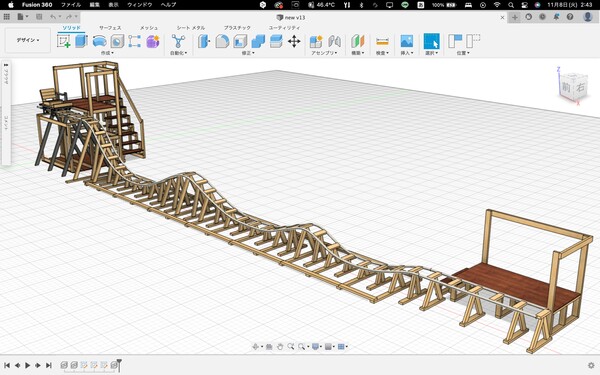
The image on the left is a complete 3D model of the rail and cart that we produced in 2021. The design was done with Autodesk's "Fusion 360," for which we changed CAD software last year and paid.
Since this was the first time to manufacture with PVC rails, we reduced the manufacturing cost by eliminating curves and implementing only two-dimensional bends when manufacturing the rails. Another purpose was to accumulate know-how for next year's production and beyond.
The cart had to be pushed up to the boarding area by hand, and stopping was achieved by attaching a sponge to the PVC pipe and using deceleration by friction.

The image above is a complete 3D model of the rail and cart that we produced in 2021. The design was done with Autodesk's "Fusion 360," for which we changed CAD software last year and paid.
Since this was the first time to manufacture with PVC rails, we reduced the manufacturing cost by eliminating curves and implementing only two-dimensional bends when manufacturing the rails. Another purpose was to accumulate know-how for next year's production and beyond.
The cart had to be pushed up to the boarding area by hand, and stopping was achieved by attaching a sponge to the PVC pipe and using deceleration by friction.
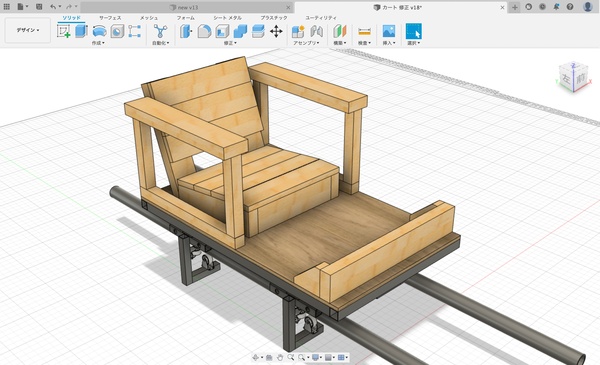
The image on the left shows a complete model of a cart implemented in Alps.

The image above shows a complete model of a cart implemented in Alps.
Below are snapshots of the production and commemorative photos.
